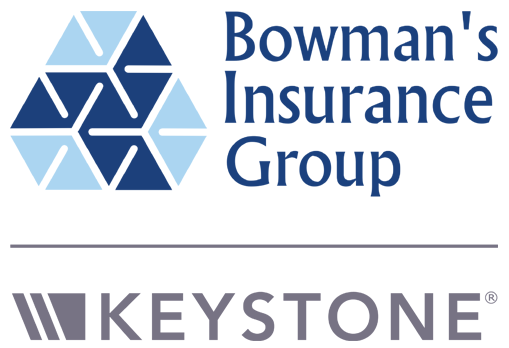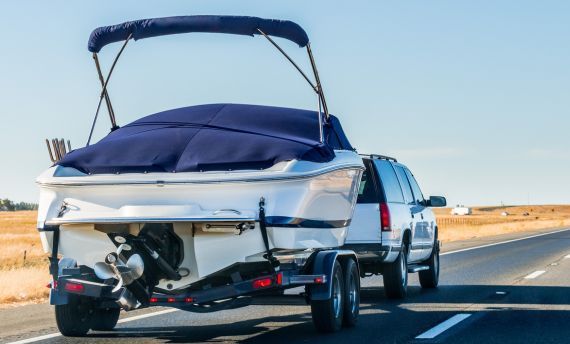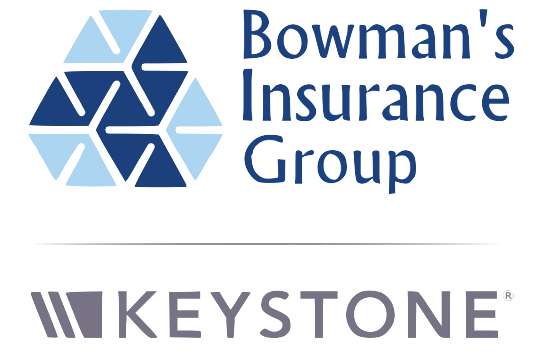
Purchasing a motorcycle is an exhilarating experience, offering a sense of freedom and adventure on the open road. However, before you can enjoy that ride in Pennsylvania, it’s crucial to ensure your motorcycle is properly insured. This guide will walk you through the steps to insure your new motorcycle so you can hit the road with peace of mind.
Understanding Motorcycle Insurance in Pennsylvania
Motorcycle insurance is not just a legal requirement; it also provides financial protection in case of accidents, theft, or damage. In Pennsylvania, motorcycle insurance laws are designed to protect riders and other road users. Understanding these laws is the first step in ensuring your motorcycle is adequately covered.
Minimum Insurance Requirements
In Pennsylvania, all motorcycle owners must carry a minimum amount of liability insurance. This includes:
- At least $15,000 for injury or death of one person in an accident.
- At least $30,000 for injury or death of two or more people in an accident.
- At least $5,000 for property damage.
While these are the minimum requirements, many riders opt for higher coverage limits to ensure better protection. It’s essential to assess your personal needs and riding habits when determining the right coverage. Factors such as how often you ride, the type of motorcycle you own, and your overall driving record can influence the level of coverage that is appropriate for you. Additionally, considering the potential costs associated with medical bills and property damage can help you make a more informed decision about your insurance needs.
Types of Coverage Available
Motorcycle insurance comes in various forms, each serving a different purpose. Here are the main types of coverage to consider:
- Liability Coverage: This covers damages you cause to others in an accident.
- Collision Coverage: This pays for damages to your motorcycle resulting from a collision, regardless of fault.
- Comprehensive Coverage: This protects against non-collision incidents such as theft, vandalism, or natural disasters.
- Uninsured/Underinsured Motorist Coverage: This provides protection if you're in an accident with a driver who has insufficient insurance.
Choosing the right mix of coverage can significantly impact your financial security in the event of an accident. Riders should also be aware of optional coverages such as roadside assistance, which can be invaluable in the event of a breakdown, and custom parts and equipment coverage, which protects any aftermarket modifications you may have made to your motorcycle. Understanding these additional options can enhance your policy and provide peace of mind while enjoying the open road.
Steps to Insure Your Motorcycle
Now that you understand the basics of motorcycle insurance, it’s time to dive into the steps needed to insure your new motorcycle. Each step is vital to ensure you have the right coverage before you take your first ride.
Step 1: Gather Necessary Information
Before reaching out to insurance providers, gather all necessary information about your motorcycle. This includes:
- The make, model, and year of the motorcycle.
- The Vehicle Identification Number (VIN).
- The purchase price and any modifications made to the bike.
- Your driving history, including any previous claims or accidents.
Having this information on hand will streamline the process and help you receive accurate quotes. Additionally, consider documenting any safety features or anti-theft devices your motorcycle may have, as these can sometimes lead to lower premiums. Keeping a record of your motorcycle’s maintenance history can also be beneficial, as it demonstrates responsible ownership and can influence your insurance rates positively.
Step 2: Research Insurance Providers
Not all insurance providers offer the same coverage or rates. Take the time to research various companies and read customer reviews. Look for providers that specialize in motorcycle insurance, as they often have tailored policies that meet the unique needs of riders.
Consider factors such as customer service, claims handling, and overall reputation. Websites that compare insurance rates can also be helpful in finding the best deals. Furthermore, don’t overlook the importance of understanding the specific coverage options available, such as liability, collision, and comprehensive coverage. Some insurers may offer additional benefits like roadside assistance or coverage for custom parts, which can enhance your overall protection and peace of mind while riding.
Step 3: Request Quotes
Once you’ve identified potential insurance providers, reach out to them for quotes. Be prepared to provide the information gathered in Step 1. Most companies will give you a quote based on the coverage you’re interested in, allowing you to compare costs and benefits easily.
Don’t hesitate to ask questions about the policies, including discounts for safe driving, bundling with other insurance types, or any special programs for motorcycle riders. Additionally, inquire about the claims process and how quickly they typically handle claims, as this can be crucial in the event of an accident. Understanding the terms and conditions of the policy is also essential; make sure to clarify any points that seem vague or confusing to ensure you’re fully aware of your coverage limits and responsibilities.
Choosing the Right Coverage
After receiving quotes, it’s time to evaluate your options and choose the right coverage for your needs. This decision can significantly impact your financial security and peace of mind while riding. Selecting the appropriate insurance not only protects your investment but also ensures that you are safeguarded against unforeseen circumstances that could arise on the road.
Evaluating Your Needs
Consider your riding habits, the type of motorcycle you purchased, and your budget. If you ride frequently or on busy roads, higher liability limits might be necessary. Conversely, if you have an older motorcycle, you might opt for more basic coverage. Additionally, it’s important to assess how often you travel long distances versus short commutes, as this can influence your risk exposure and the type of coverage that best suits your lifestyle.
Furthermore, think about whether you want comprehensive and collision coverage. If your motorcycle has a high value or if you’ve invested in aftermarket parts, these coverages can be worth the extra cost. Comprehensive coverage protects against non-collision-related incidents, such as theft or natural disasters, while collision coverage helps cover damages from accidents, regardless of fault. Evaluating the potential risks associated with your riding environment can help you make a more informed decision regarding these options.
Understanding Policy Terms
Before finalizing your insurance policy, it’s crucial to understand the terms and conditions. Read through the policy carefully, paying close attention to:
- Deductibles: The amount you’ll pay out of pocket before coverage kicks in.
- Exclusions: Situations or damages that are not covered by the policy.
- Limits: The maximum amount the insurer will pay for a covered claim.
If anything is unclear, don’t hesitate to ask your insurance agent for clarification. It’s better to be informed than to face unexpected costs later. Additionally, consider the potential for discounts that may apply to your policy. Many insurers offer reductions for safe driving records, completing safety courses, or bundling multiple policies. Understanding these nuances can lead to significant savings and ensure you’re getting the most value from your coverage.
Finalizing Your Insurance
Once you’ve chosen the right policy, it’s time to finalize your insurance. This step involves a few important actions to ensure you’re fully covered before hitting the road.
Complete the Application Process
To finalize your insurance, you’ll need to complete the application process with your chosen provider. This typically involves filling out forms with your personal information, motorcycle details, and selected coverage options.
Be honest and thorough in your application to avoid issues later. Any discrepancies could lead to denied claims or policy cancellations. Additionally, take the time to review any optional coverages that may be available, such as roadside assistance or coverage for custom parts and accessories. These options can provide peace of mind and enhance your riding experience, especially if you plan to take longer trips or participate in motorcycle events.
Payment of Premiums
After your application is processed, you’ll need to pay your premium to activate your coverage. Insurance companies often offer various payment options, including monthly, quarterly, or annual payments. Choose the plan that fits your budget best.
Keep in mind that some insurers may offer discounts for paying your premium in full upfront, so it’s worth exploring these options. Additionally, inquire about any other discounts you might qualify for, such as those for safe driving records, completing a motorcycle safety course, or being a member of certain motorcycle clubs. These savings can significantly reduce your overall insurance costs and make your policy more affordable.
Receive Proof of Insurance
Once your payment is processed, you will receive proof of insurance, typically in the form of a card or document. Keep this proof with you whenever you ride, as it’s required by law in Pennsylvania. If you’re stopped by law enforcement, you’ll need to present this proof.
In addition to the physical proof, many insurance companies now offer digital options, allowing you to access your insurance documents via a mobile app or online account. This can be particularly convenient, as it ensures you always have your information on hand, even if you forget your physical card at home. Be sure to familiarize yourself with how to access these digital documents, as they can also provide additional resources, such as contact information for roadside assistance or claims filing procedures, making your riding experience even smoother.
Additional Considerations for Motorcycle Insurance
While the steps above cover the essentials of insuring your motorcycle, there are additional considerations to keep in mind. These factors can influence your insurance experience and overall protection.
Safety Courses and Discounts
Many insurance providers offer discounts for riders who complete safety courses. These courses not only enhance your riding skills but can also lower your insurance premiums. Check with your provider to see if they recognize any specific courses and what discounts they offer. Moreover, completing advanced riding courses can further improve your skills and may even qualify you for additional savings. These programs often cover emergency maneuvers, hazard recognition, and defensive riding techniques, which are invaluable for both novice and experienced riders alike.
Regularly Review Your Policy
Your insurance needs may change over time, especially if you upgrade your motorcycle or alter your riding habits. It’s wise to review your policy annually or whenever significant changes occur. This ensures you maintain adequate coverage and take advantage of any new discounts or options available. Additionally, consider the impact of your riding environment—if you move to a new area with different traffic conditions or weather patterns, your risk profile may change, warranting a policy adjustment. Staying proactive about your coverage can help you avoid gaps in protection and ensure you’re not overpaying for unnecessary features.
Understanding Claims Process
In the unfortunate event of an accident, knowing how to navigate the claims process can save you time and stress. Familiarize yourself with your insurer’s claims process, including how to report an accident, what documentation is needed, and the timeline for claims resolution. Having this knowledge beforehand can make a challenging situation more manageable, allowing you to focus on recovery and getting back on the road. Additionally, consider keeping a dedicated folder with all necessary documents, such as your policy details, accident report forms, and contact information for your insurance agent. This preparation can streamline the process and ensure you have everything at your fingertips when you need it most.
Furthermore, understanding the nuances of your policy can help you anticipate potential challenges during the claims process. For instance, knowing the difference between actual cash value and replacement cost coverage can significantly impact the compensation you receive in the event of a total loss. Engaging with your insurance agent to clarify these terms and conditions can empower you to make informed decisions and advocate for yourself effectively when it matters most.
Conclusion
Insuring your motorcycle in Pennsylvania is a vital step to ensure your safety and financial security while riding. By understanding the insurance requirements, gathering necessary information, and carefully choosing your coverage, you can confidently hit the road on your new motorcycle.
Remember to regularly review your policy and stay informed about any changes in insurance laws or options. With the right preparation, you can enjoy the freedom of the open road while knowing you’re protected.













